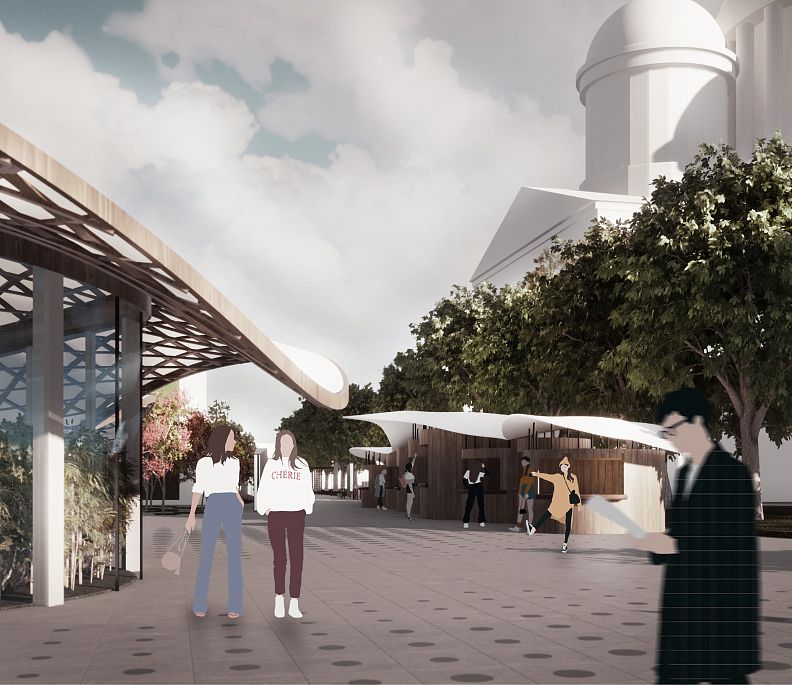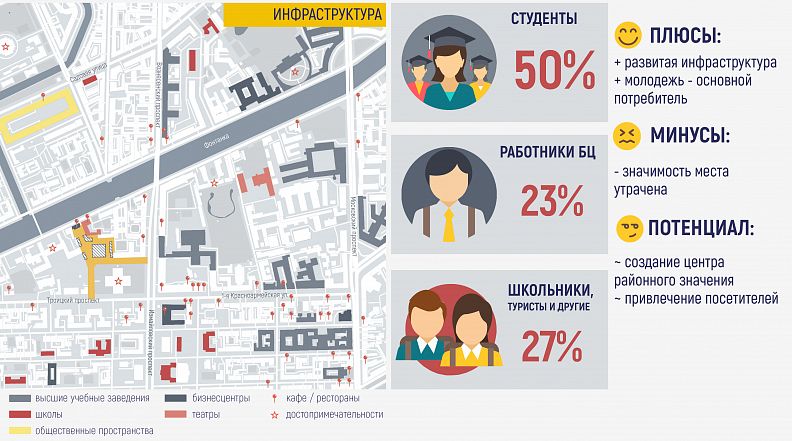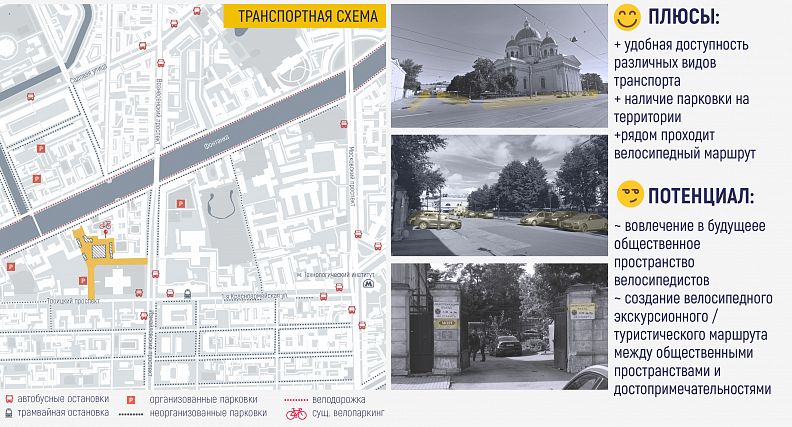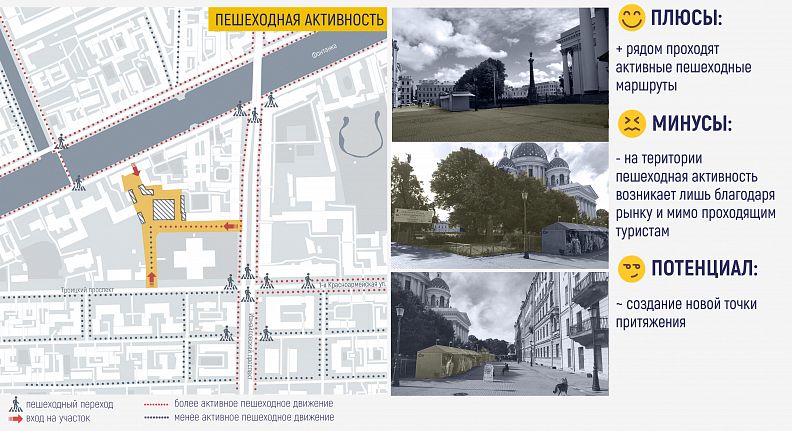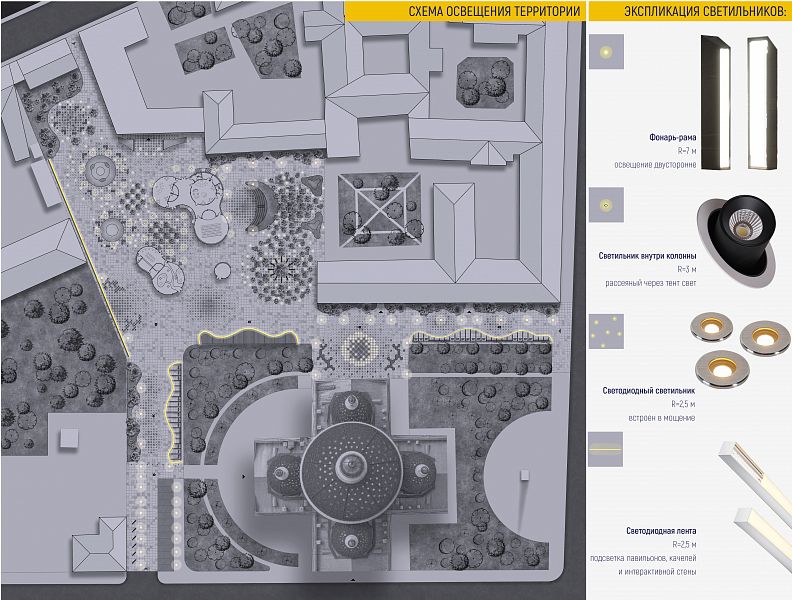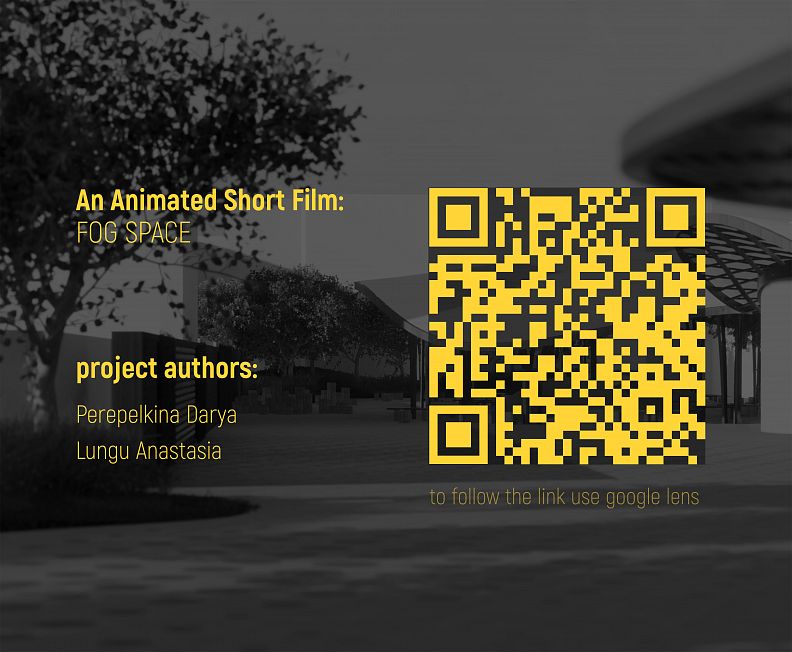"Fog space"

Project idea
The design area is located in the historical part of St. Petersburg close to the Trinity Cathedral, which is the visual dominant of this area. The aim of the project is to design a public space that will reveal the historical identity of the place and create a unique regional center of attraction. Until 2020 the Trinity market was located on the selected territory. It was demolished. At the moment only a small part of trade pavilions still work here. Also the demolition of the market led to the formation of illegal trade. it Is planned to build a residential complex instead of a market. With this project we wanted to show an alternative way to use this territory, because the construction of a residential complex does not reveal the potential of this place. There is a well-developed infrastructure within a radius of 1 kilometer from the design site. There are many schools, universities, restaurants, and coworking spaces. Do not forget that it is the historical center of the city with a lot of sightseeings. Potential users of public space can be students, business workers, schoolchildren, tourists, residents of nearby houses.
Project description
The Trinity Cathedral is an active dominant that cannot be ignored. And therefore the cathedral is taken as the main point of attraction, it becomes an attractor. Attractor is the point to which all trajectories of events tend. Zones with various activities also become attractors. These attractors differ from other areas by their paving. In the center the radius of the circles is maximum, as the activity in the center of the attractor reaches a high level. Gradually the radius of the circles decreases and at the extreme points of the attractor the radius of the circles is minimal, because no events occur there. These zones are mainly transit zones for movement from one attractor to another. You can draw an analogy with a bell ringing. The closer you are to the sound source, the stronger the ringing is heard. Also in the attractor the closer you are to the epicenter of the event, the stronger its activity.
Types of attractors:
1. An event occurs in the center of the attractor;
2. There is an object in the center of the attractor;
3. There is a garden in the attractor zone;
4. Objects are located on the outer circle of the attractor.
One of the largest attractors is located in front of the Trinity Cathedral, forming a square in front of it. This area contains parametric benches and an audiovisual installation. This attractor is the point of attraction to the entrance to the cathedral.
A park zone has been designed on the territory of two other large attractors. It serves as a buffer zone between the projected public space and the existing residential area. There is an artificially created geoplastic "Green Hills". The attractor principle is also reflected in tree planting. The tallest trees are located in the center. Towards the edges of the attractor the height of the trees gradually decreases. Also with the density of tree planting. It is maximum in the center and decreases towards the edges.
Smaller attractors form the entrance area with a swing. The swing here was not designed by chance. In Soviet times, this entertainment was also here. To preserve the memory of the Trinity Market, trade pavilions are provided on the territory.
Technical information
The "Theater of Rains" adjoins the design site. To provide an entrance to the theater directly from the public space, an entrance group with a canopy is arranged. An open-air theater with an amphitheater will be located next to the “Theater of Rains”.
A large area is occupied by the “FOG” pavilion. Under its roof several attractors are located. The “FOG” pavilion has a curvilinear roof. The supporting structures are made of wood. A theater school is located under the roof of the pavilion, which will allow non-professionals to learn theatrical art. There is a cafe, a greenhouse and game hills. There are several large holes for trees in the roof of the pavilion.
An interactive wall is supposed to be arranged on the western side along the fence of the hospital. There is an information zone where visitors can know about the history of the place. There is also a play area, equipment can be attached to the wall. There is also an interactive area. It is represented by many rotating colorful balls, visitors will be able to interact with this exhibit and create unique images.
